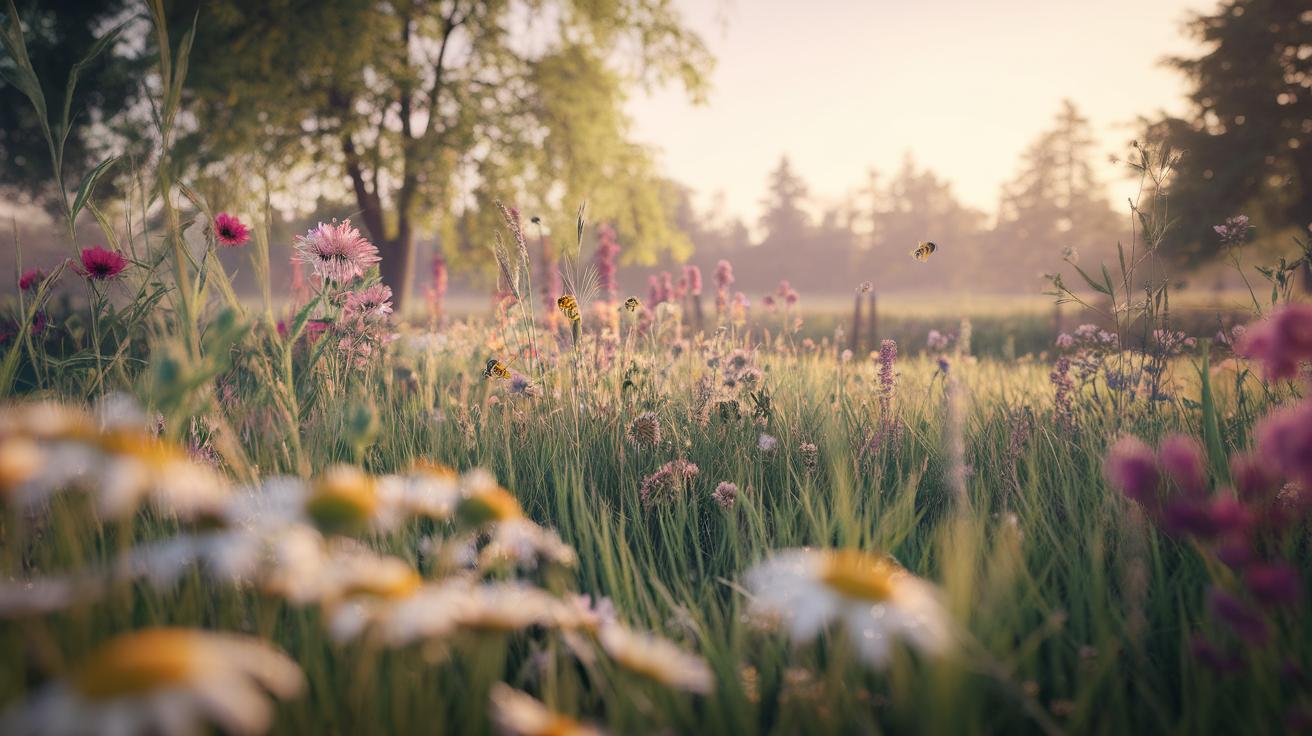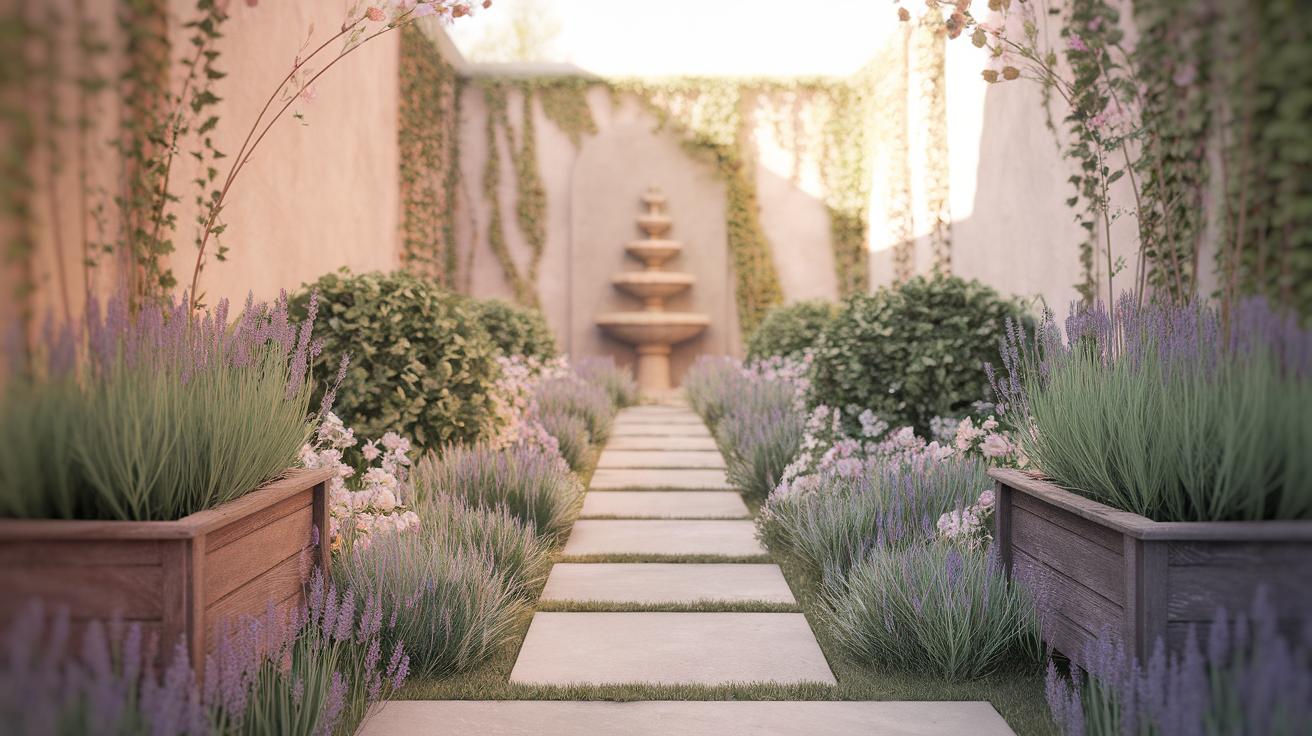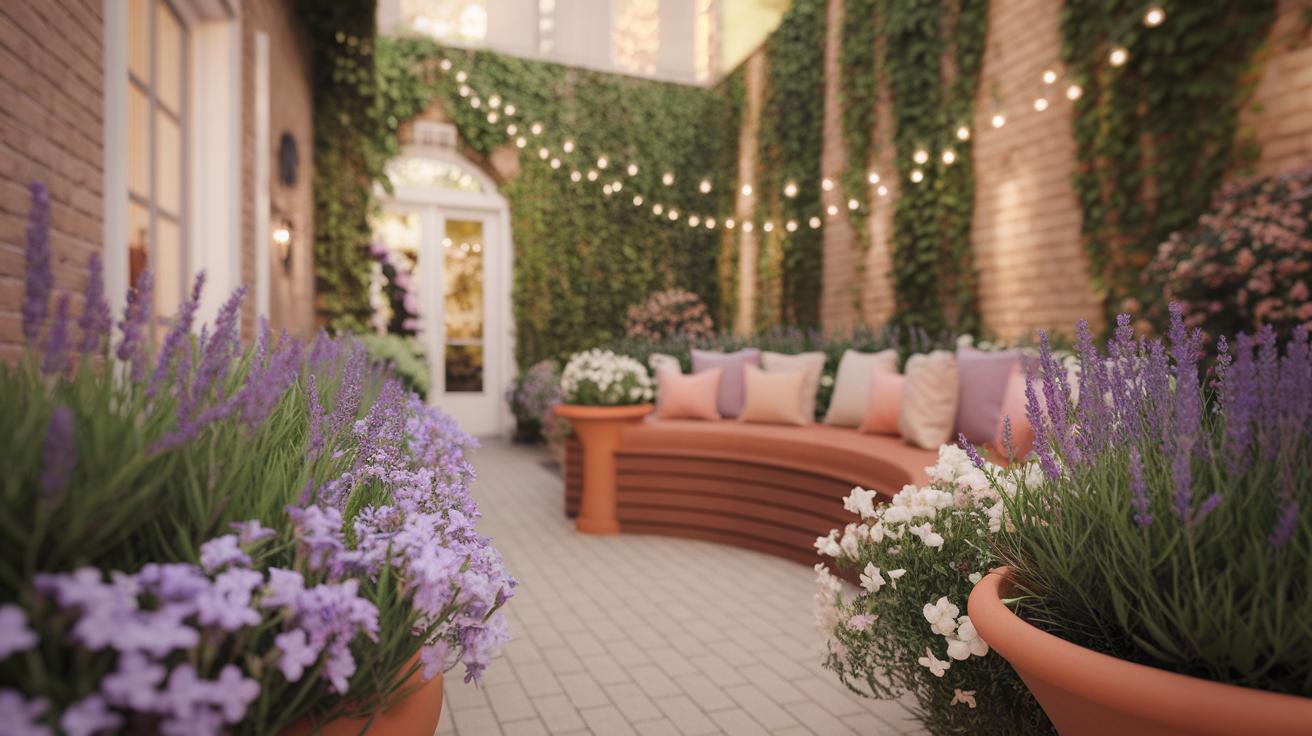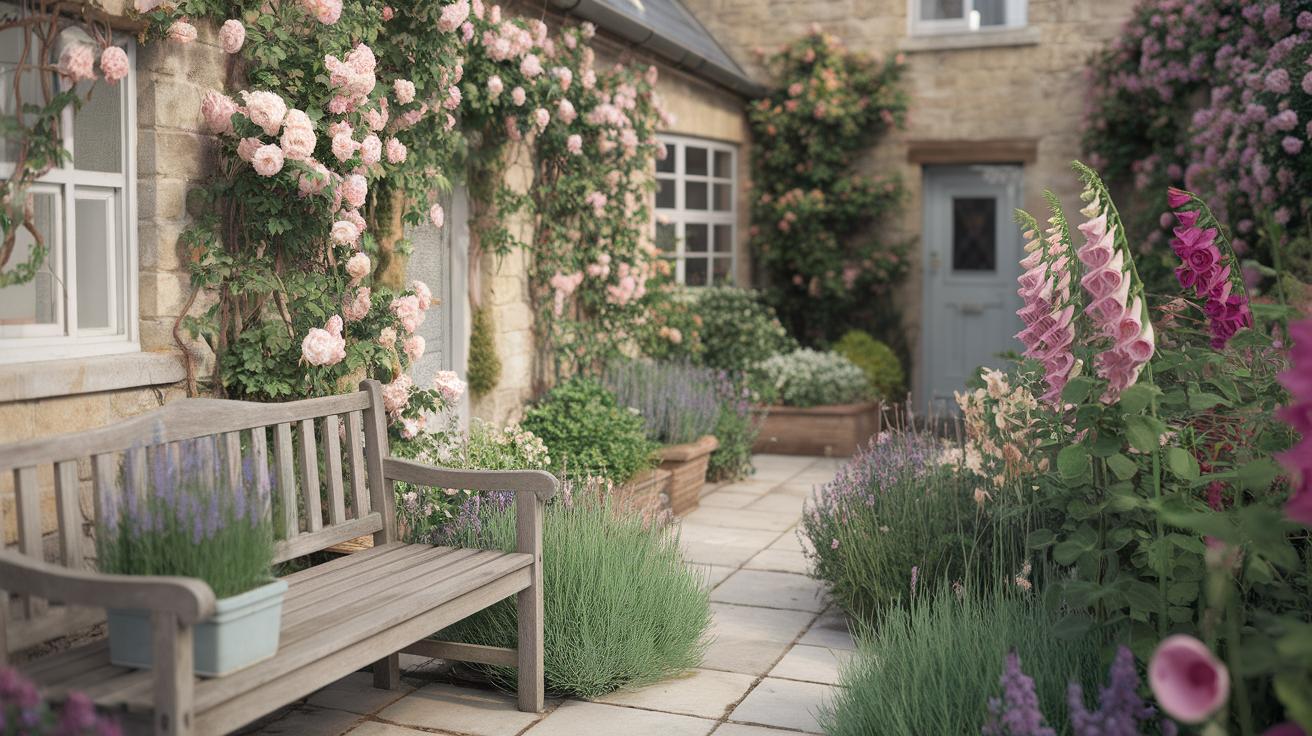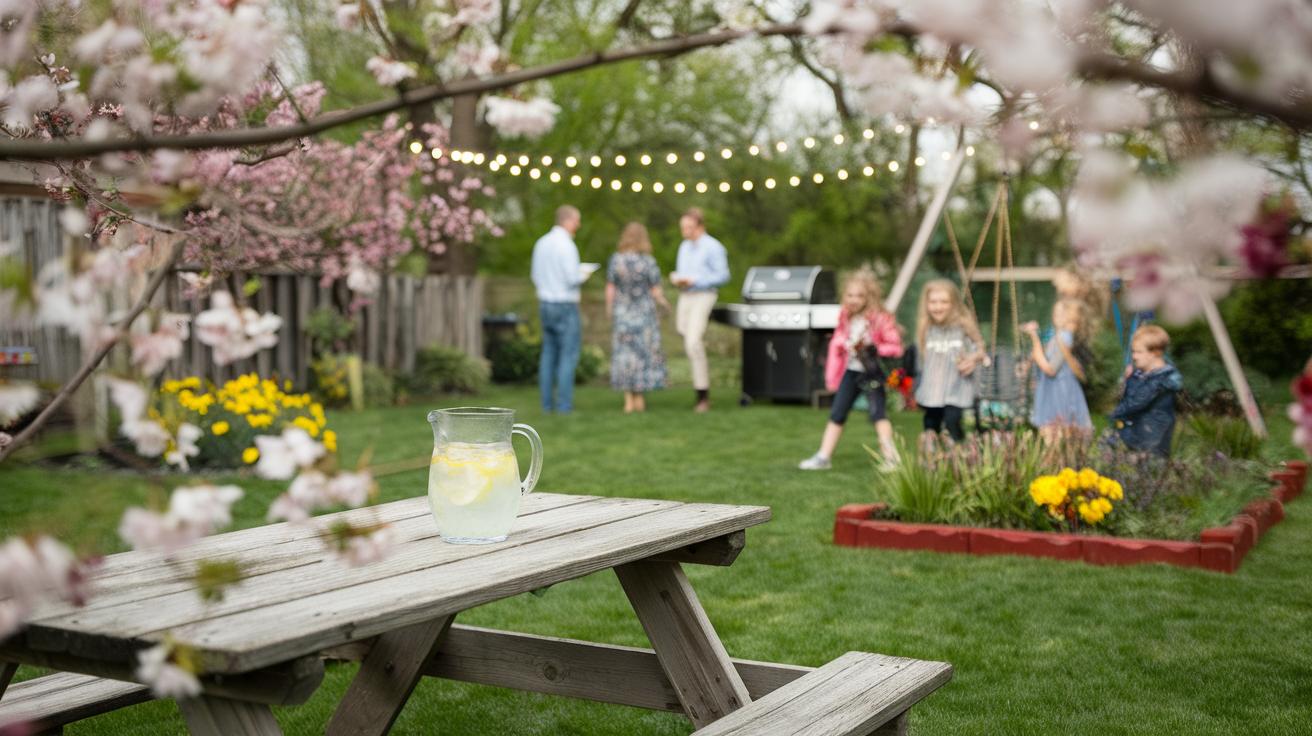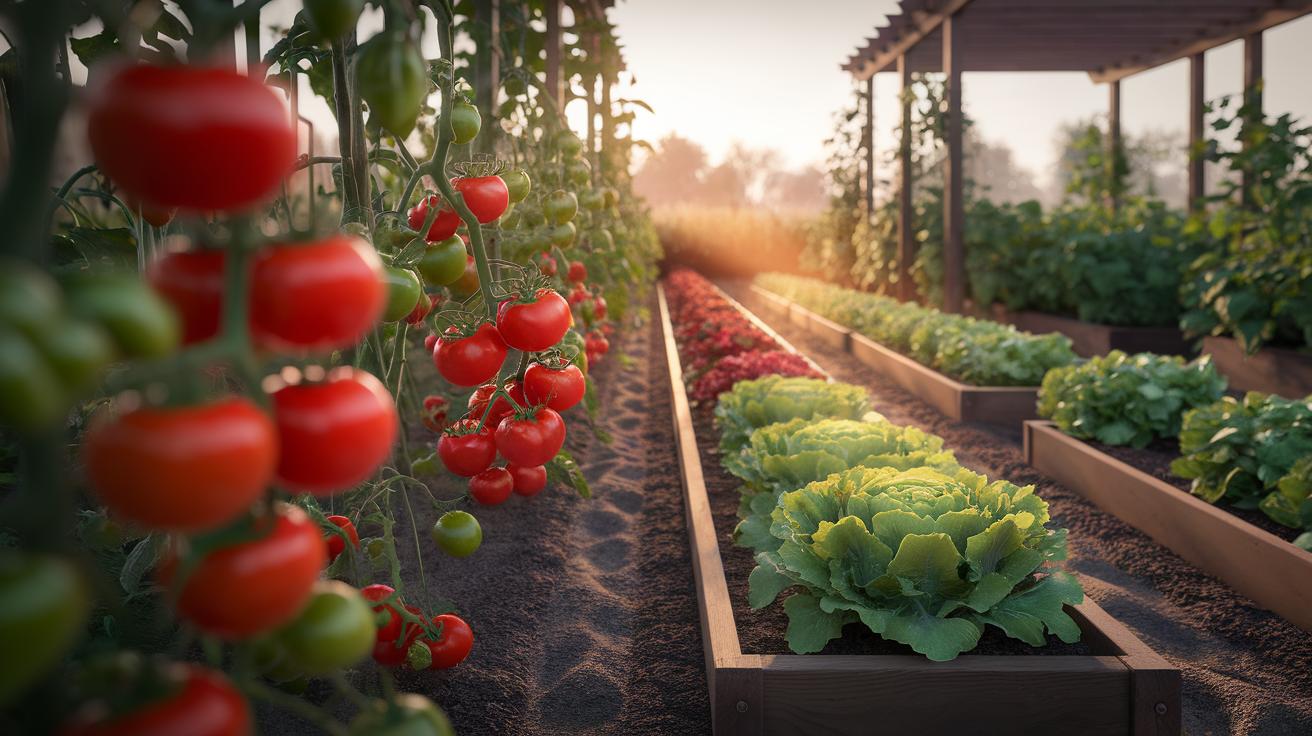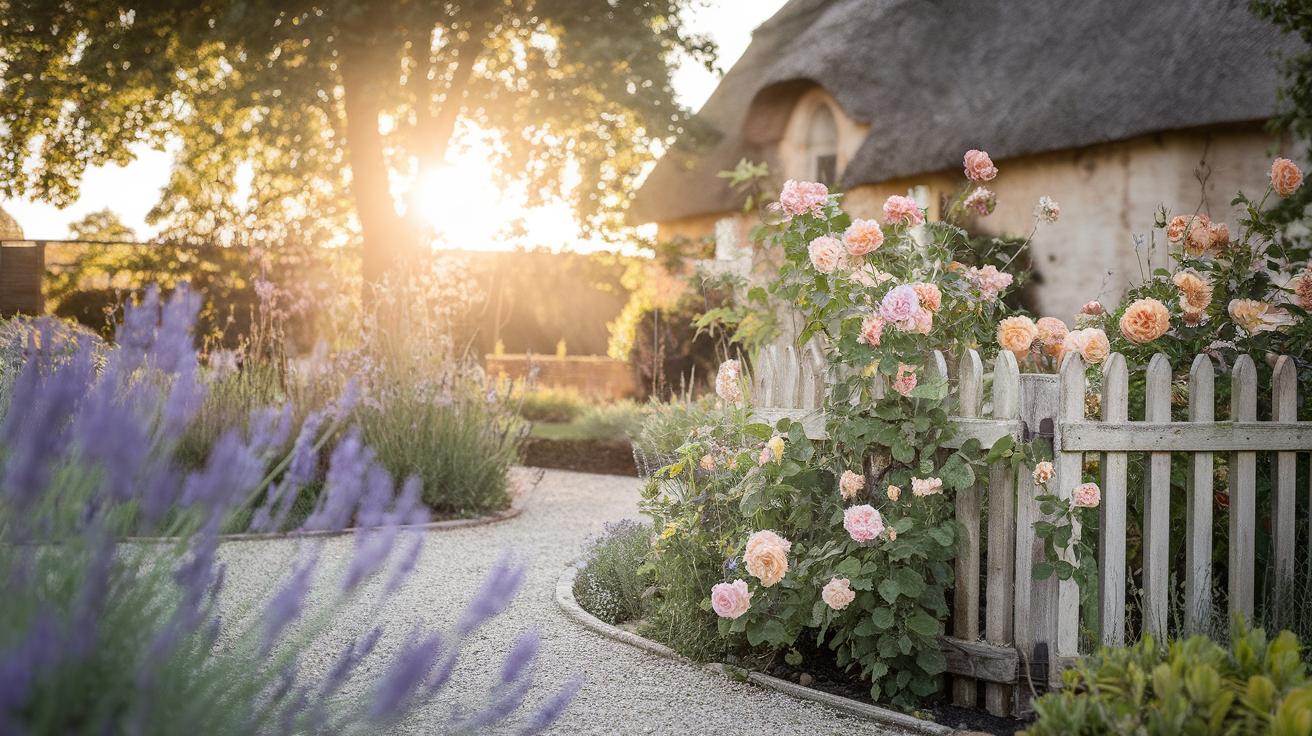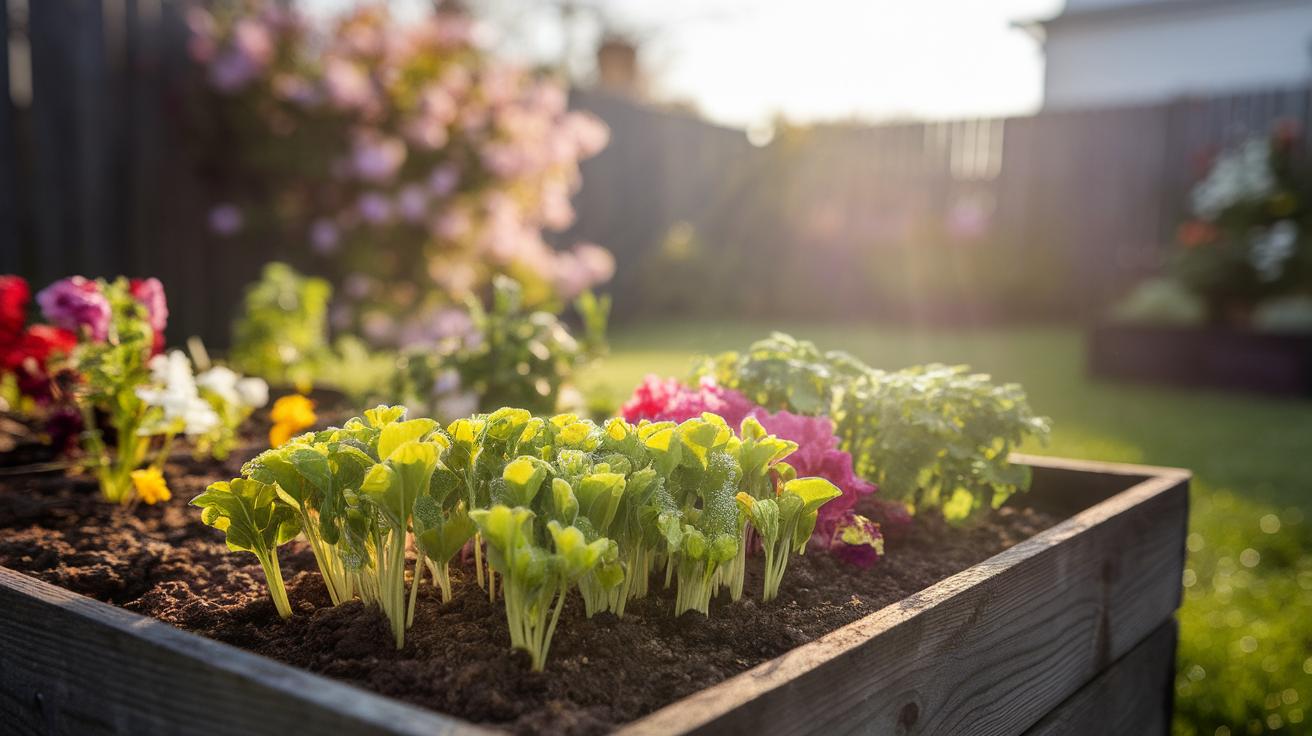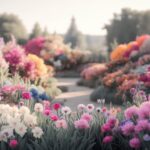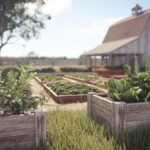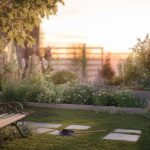Introduction
Wildflower gardens offer a natural and effective way to support pollinators, including bees, butterflies, and birds. These animals transfer pollen from one flower to another, which helps plants reproduce and thrive. Wildflower gardens attract pollinators by providing food sources and habitats tailored to their needs. Your garden can become a small but significant piece of a larger effort to sustain pollinator populations and promote biodiversity.
Understanding how to build and maintain a wildflower garden benefits both your environment and local wildlife. Using native plants that are adapted to your region increases the chances of success, lowers maintenance, and supports native pollinators better. This article guides you through practical steps to create a vibrant wildflower garden focused on pollinators’ needs, offering easy-to-apply tips and ideas for a thriving outdoor space.
Understanding Pollinators And Their Role
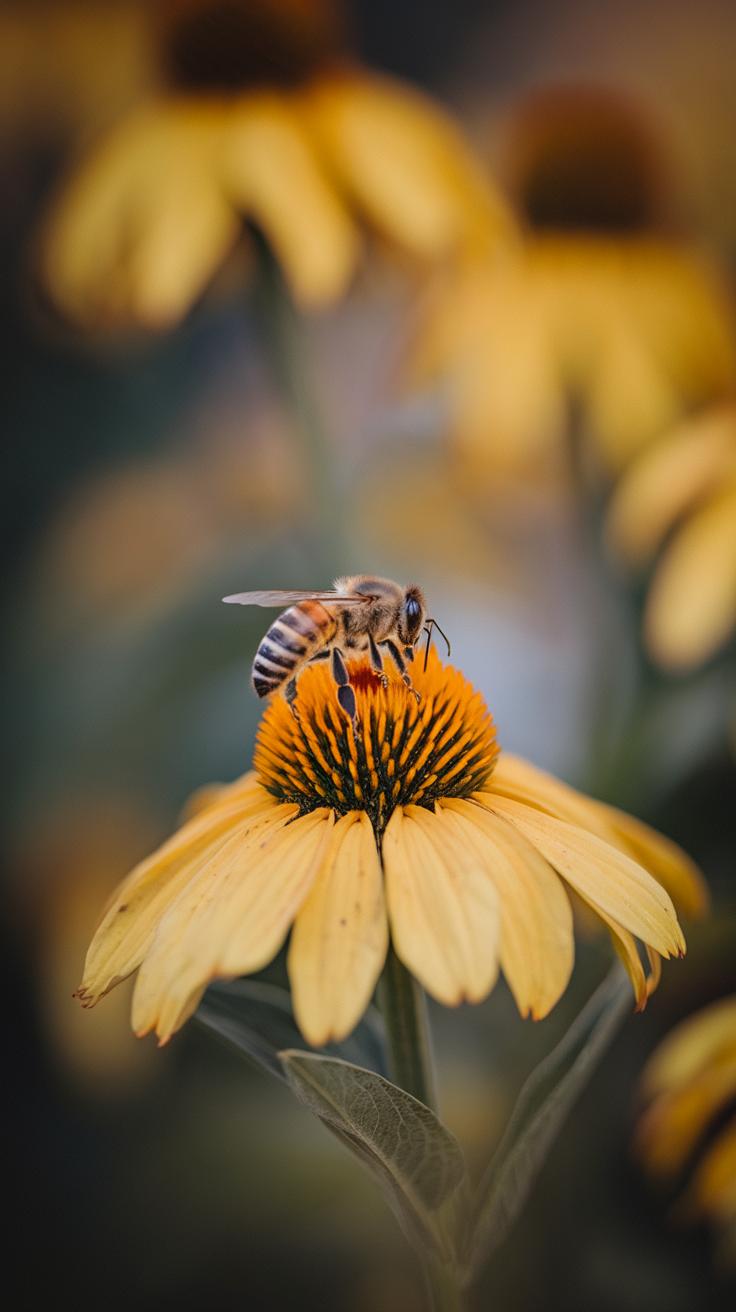
Pollinators are animals that help plants reproduce by moving pollen from one flower to another. This transfer lets plants produce seeds and fruit. Without pollinators, many plants would struggle to make new plants. Pollinators include insects like bees and butterflies, as well as birds and some mammals.
Each pollinator has a part in nature’s balance. Bees collect pollen for food while moving pollen between flowers. Butterflies often visit flowers for nectar, carrying pollen on their legs and wings. Birds like hummingbirds feed on nectar and also help spread pollen. You might wonder how these actions support your garden or food supply. Pollinators also help crops grow, so they support the foods we eat every day.
Pollination plays a key role not only in gardens but also in keeping ecosystems healthy. When plants produce seeds, they create food and homes for many animals. Do you think about the pollinators you see around your outdoor spaces? Encouraging their activity in your wildflower garden helps support this vital process.
Types Of Pollinators
Bees are the most well-known pollinators. They have hairy bodies that catch pollen easily while they gather nectar. Butterflies have long tongues to reach nectar deep inside flowers. Moths work mainly at night, visiting flowers that open after dark. Flies and beetles also pollinate, but they usually prefer different flower types and less showy colors.
Among vertebrates, birds like hummingbirds have rapid wingbeats that let them hover. This hovering lets them access nectar without landing. Bats pollinate at night and are attracted to flowers with strong scents and pale colors. Each pollinator’s unique traits, such as body shape or feeding habits, match well with certain flowers. This match helps flowers get the pollen they need.
Do you notice which pollinators visit your garden? You can plant flowers that attract a variety of these helpers. Offering food and habitat for many pollinators creates a stronger garden ecosystem.
Pollination Process
Pollination happens when pollen moves from the male part of a flower to the female part. Flowers attract pollinators by using colors, shapes, and scents. Bright colors catch the eye of bees. Sweet smells lure butterflies and moths. Some flowers have deep tubes that only certain pollinators can reach with their tongues.
When a pollinator lands on a flower, it collects nectar as food. While feeding, pollen sticks to its body. As the pollinator moves to the next flower, pollen transfers to the female part, called the stigma. This transfer lets the flower start making seeds and fruit.
This cycle is important for wildlife and humans. Without pollination, many plants would not survive or produce food. Does your garden have flowers that offer nectar and pollen at different times? Providing these helps keep pollinators visiting throughout the growing season.
Choosing Native Wildflowers For Your Garden
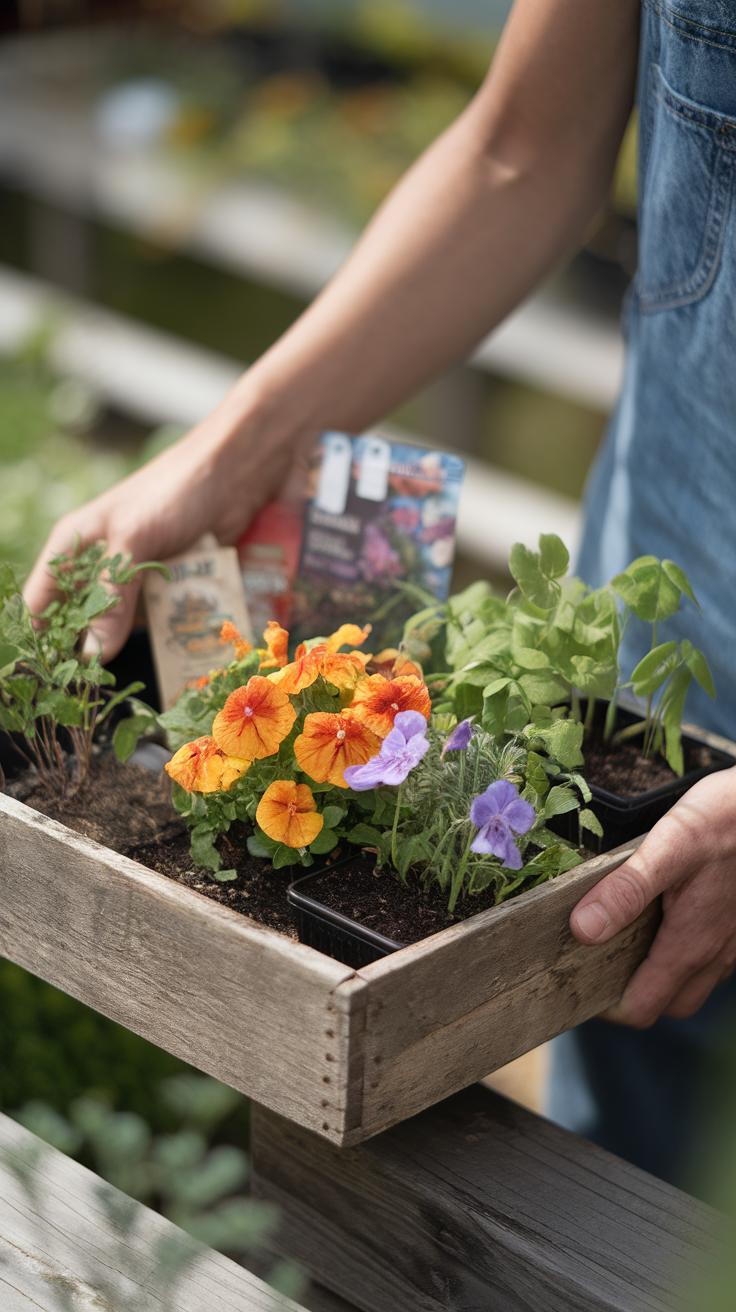
Picking wildflowers that naturally grow in your region leads to a thriving garden. Native wildflowers are better suited to the local climate, soil, and rainfall patterns. They require less watering and fewer fertilizers than non-native species.
Native plants also support your local wildlife more effectively. Pollinators like bees and butterflies have evolved alongside these flowers and rely on them for food and shelter. Using native wildflowers helps build a strong, balanced ecosystem in your yard.
Have you thought about which wildflowers naturally bloom around your home? Choosing these guarantees your garden will be easier to grow and more inviting to native pollinators. This approach saves you time and effort while supporting biodiversity right where you live.
Advantages Of Native Plants
Native wildflowers thrive in local soil and weather without constant care. Their roots adapt well to the ground, enabling them to withstand drought or heavy rain better than many exotic plants.
These flowers often resist pests that commonly attack non-native species. They can naturally protect themselves, which reduces the need for pesticides in your garden.
More importantly, native plants provide essential habitat for native pollinators. They supply the right kinds of nectar and pollen throughout the growing season. This helps keep pollinator populations healthy and active near your home.
Finding The Right Wildflowers
Begin by searching for native wildflower lists and guides for your state or region. Many state conservation websites offer seed mix recommendations tailored to local conditions.
Check catalogs from local nurseries that specialize in native plants. You can also contact nearby botanical gardens or native plant societies for advice on sourcing quality seeds or starter plants.
Asking these sources for guidance helps you select species that bloom at different times, creating continuous food for pollinators. Think about what fits your soil type and sunlight availability too. Your garden’s success starts with choosing the right wildflowers for your exact location.
Designing Your Wildflower Garden Layout
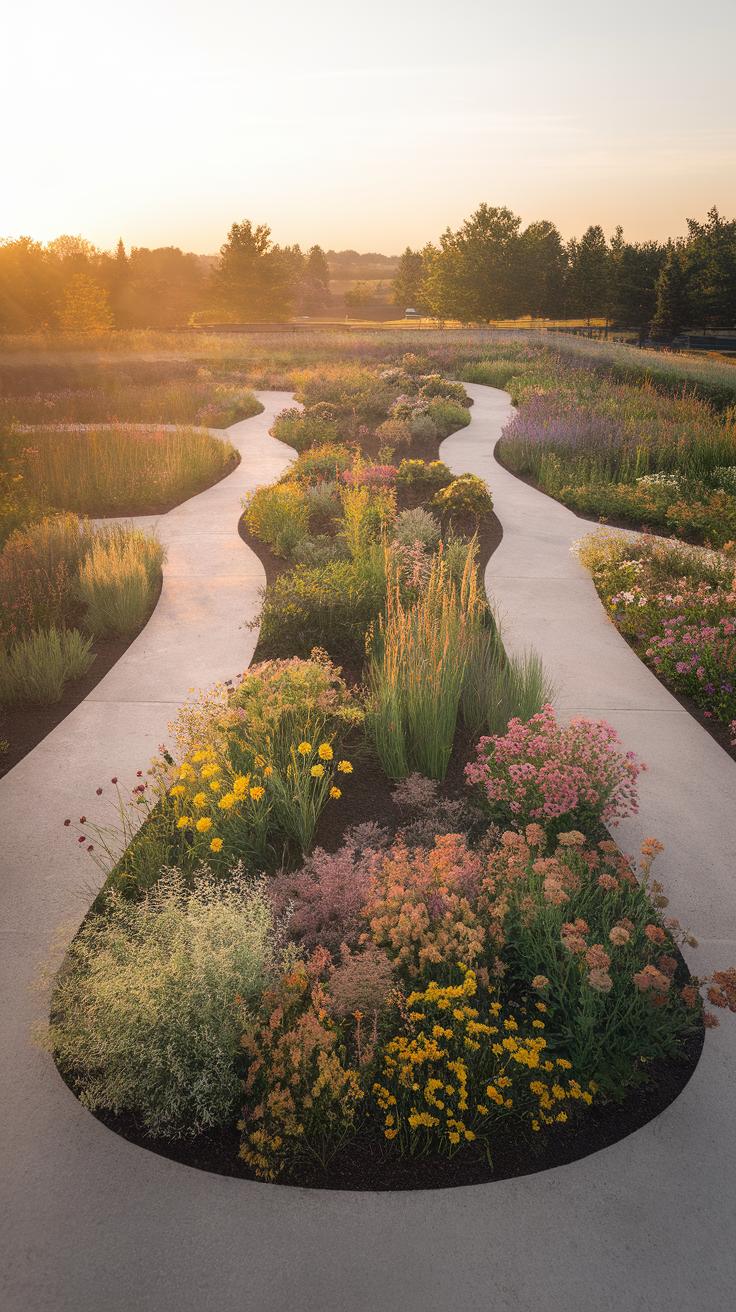
Spacing your wildflowers properly helps plants grow strong and gives pollinators easy access to nectar. Too close, and the plants compete for sunlight and water. Spread them out based on their size—taller plants need more space around their base than shorter ones.
Mixing flower species attracts a wider variety of pollinators. Bees prefer some flowers, butterflies others, so including many kinds increases visits. Group the same species together in clusters to make it easier for pollinators to find them. You might plant a patch of purple coneflowers next to a field of black-eyed Susans.
Vary the heights in your garden for layered interest and to support different pollinator behaviors. Some insects prefer flowers close to the ground, while others seek higher blooms. Think about how tall each plant grows and plan accordingly.
Schedule plants with staggered bloom times. Early spring flowers feed emerging bees, while summer and fall blooms support late-season butterflies. Combining plant species that flower at different times ensures pollinators find food throughout the season.
Creating Diverse Flowering Zones
Providing a mix of flower species that bloom at different times keeps pollinators coming back. Early bloomers like bloodroot or wild geranium feed queen bees in spring. Mid-season flowers such as bee balm or butterfly milkweed offer food through summer.
Late-season bloomers like goldenrod or asters are crucial for pollinators stocking up before winter. How can you plan your garden to always have something blooming? Divide the garden into zones or sections, each with plants that flower in different months.
Planting in diverse zones helps prevent food shortages for pollinators. It also supports different pollinator species that may appear at specific times. When you build a garden that blooms all season, you create a reliable resource for local wildlife.
Sunlight And Soil Considerations
Most wildflowers require full sun to thrive, meaning at least six hours of direct sunlight each day. Choose garden spots free from overhanging trees or buildings that cast shadows. Some species tolerate partial shade, but check the needs of your chosen plants.
Knowing your soil’s quality makes a big difference. Conduct a simple soil test to check pH and fertility. Wildflowers prefer well-drained soil that isn’t too rich. Avoid spots heavy with clay or overly compacted soil.
Prepare the soil by loosening it with a garden fork or tiller. You can mix in sand or organic matter like compost to improve drainage and texture. This preparation helps wildflower roots establish better and access nutrients efficiently.
Preparing Your Garden Site And Soil
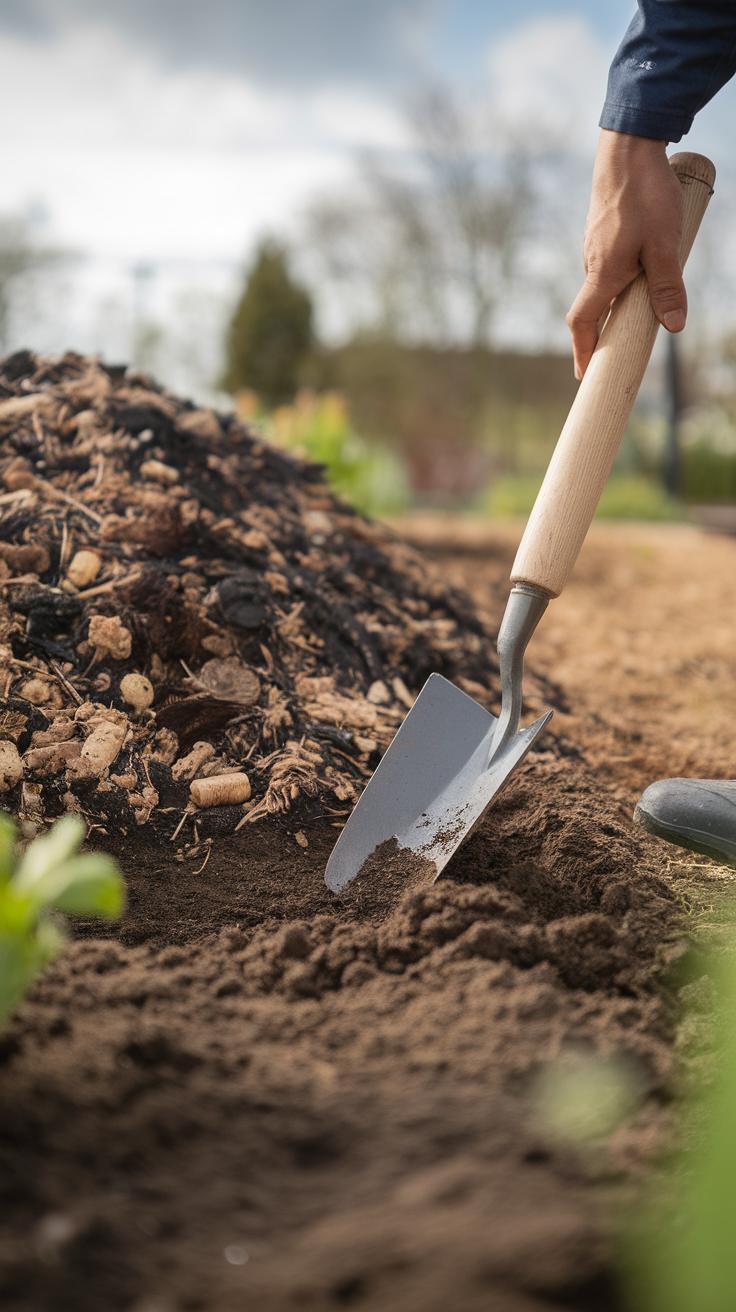
Removing existing grass and weeds creates space for your wildflowers to grow without competition. Use a garden fork or hoe to break up the ground and clear away roots and debris. If your area is large, consider covering it with cardboard or black plastic for a few weeks to kill unwanted plants by blocking sunlight.
Loosening the soil helps seeds take root more easily. Dig or till the top 6 inches to create a crumbly texture. Avoid compacting the soil afterward by walking gently or using lightweight tools. This step allows air, water, and roots to spread well.
Enriching soil naturally improves wildflowers’ chances. Mix in compost or aged leaf mulch to add organic matter. These materials feed soil microbes and improve water retention. Ask yourself: does my soil seem hard and lifeless? If so, natural amendments can help bring it back.
Clearing And Preparing Soil
Start by removing all weeds, grasses, and old roots from the planting area. Pull or dig them out by hand for smaller sites. For stubborn patches, scraping or hoeing the surface works well. Aim to remove plant material down to the soil to reduce root regrowth.
Rake the soil surface until it’s smooth and free of clumps. This creates an even bed where seeds can settle evenly. A level surface stops water from pooling after rain and supports good seed-to-soil contact.
Think about how compact your soil is. Heavy, clay soils may need extra work to break apart, while sandy soil benefits from adding organic matter. How you prepare your soil surface will make a difference in seed germination success.
Soil Amendments And Testing
Test your soil’s condition before planting. Use a simple home soil test kit to check pH and nutrient levels. Wildflowers often prefer neutral to slightly acidic soil, around pH 6 to 7. Adjust only if your soil is too far outside that range.
Improve drainage by mixing in organic materials like compost or finely chopped leaves. These increase pore space, lowering water runoff and preventing seed rot. Avoid chemical fertilizers that can harm native plants and pollinators.
Adding small amounts of natural amendments gradually helps your soil without overwhelming the wildflowers. Have you tested your soil’s health recently? Simple steps now can create a stronger start for your garden’s future.
Planting Wildflowers Successfully
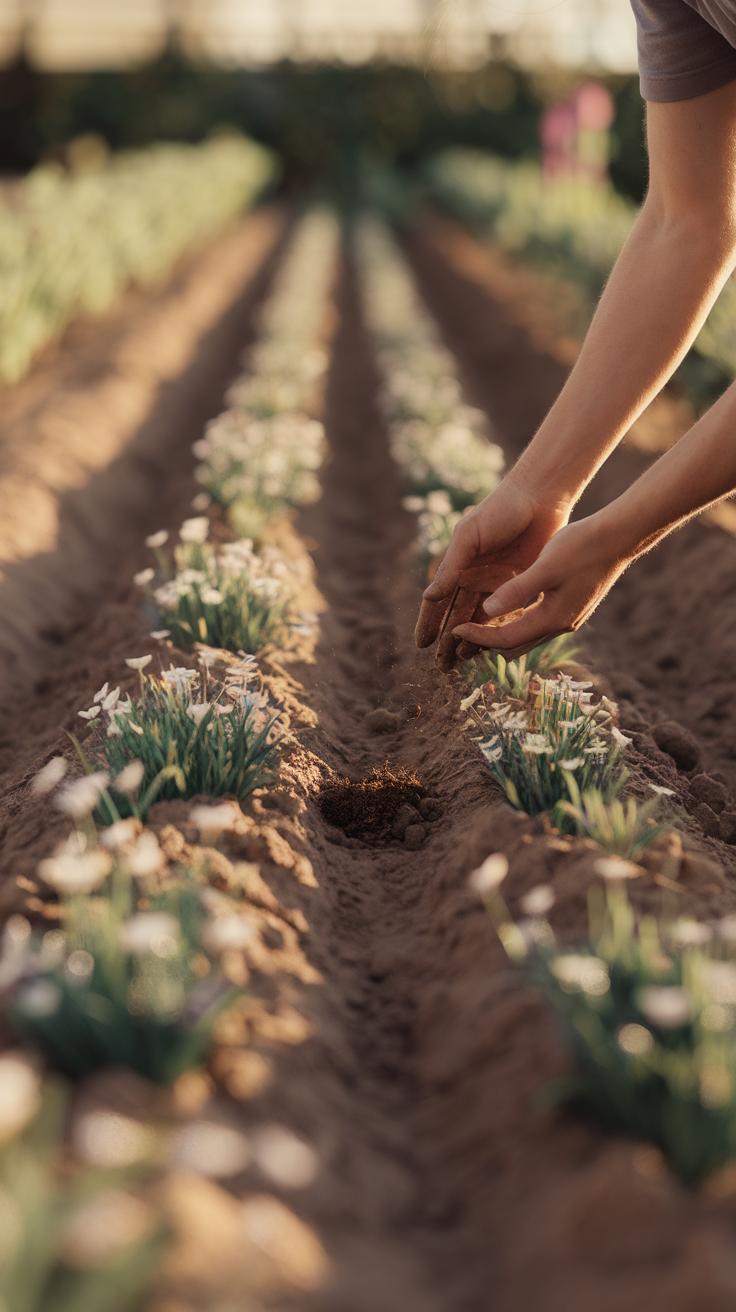
Your wildflower garden begins with how you plant the seeds or seedlings. Start by choosing the right time based on your local climate and the type of wildflowers you want to grow. Most wildflower seeds do best when sown in early spring or fall, but check the needs of each species.
Sow seeds shallowly, usually about a quarter-inch deep. Some tiny seeds should rest on the soil surface without covering. Space seeds or seedlings according to species instructions, often about 6 to 12 inches apart, so plants have room to grow.
Water gently after planting to settle seeds into the soil. Keep the soil moist but not soaked while seeds germinate. If planting seedlings from a nursery, harden them off first by exposing them gradually to outdoor conditions over a week. This prevents shock once in your garden.
Timing And Sowing Techniques
Time planting to match your climate zone. In colder areas, sow seeds indoors or use nursery seedlings before the last frost. Warmer regions allow direct sowing almost year-round. Certain wildflowers need chilling periods to break dormancy; for them, fall sowing works best.
Direct sowing places seeds straight into prepared soil. It suits hardy species that establish easily. Nursery transplanting helps with delicate plants or those with slow germination. When starting indoors, use seed trays with well-draining soil and plant seeds thinly to avoid overcrowding.
How well do you know your local frost dates? Planning around those can improve germination rates and reduce seedling loss.
Initial Care And Watering
Young wildflowers need steady moisture to root deeply. Water the soil gently every day or every other day during dry spells. Avoid soaking leaves to reduce disease risk. Mulching lightly can conserve moisture but leave some soil exposed to warm up quickly.
Protect seedlings from pests with natural methods. Row covers or fine mesh can keep insects away without chemicals. Watch for birds or small animals that may dig up seeds or nibble young shoots.
If you spot damage or wilting, adjust watering habits or check for pests promptly. Healthy seedlings grow into strong plants that support pollinators well.
Maintaining Your Wildflower Garden
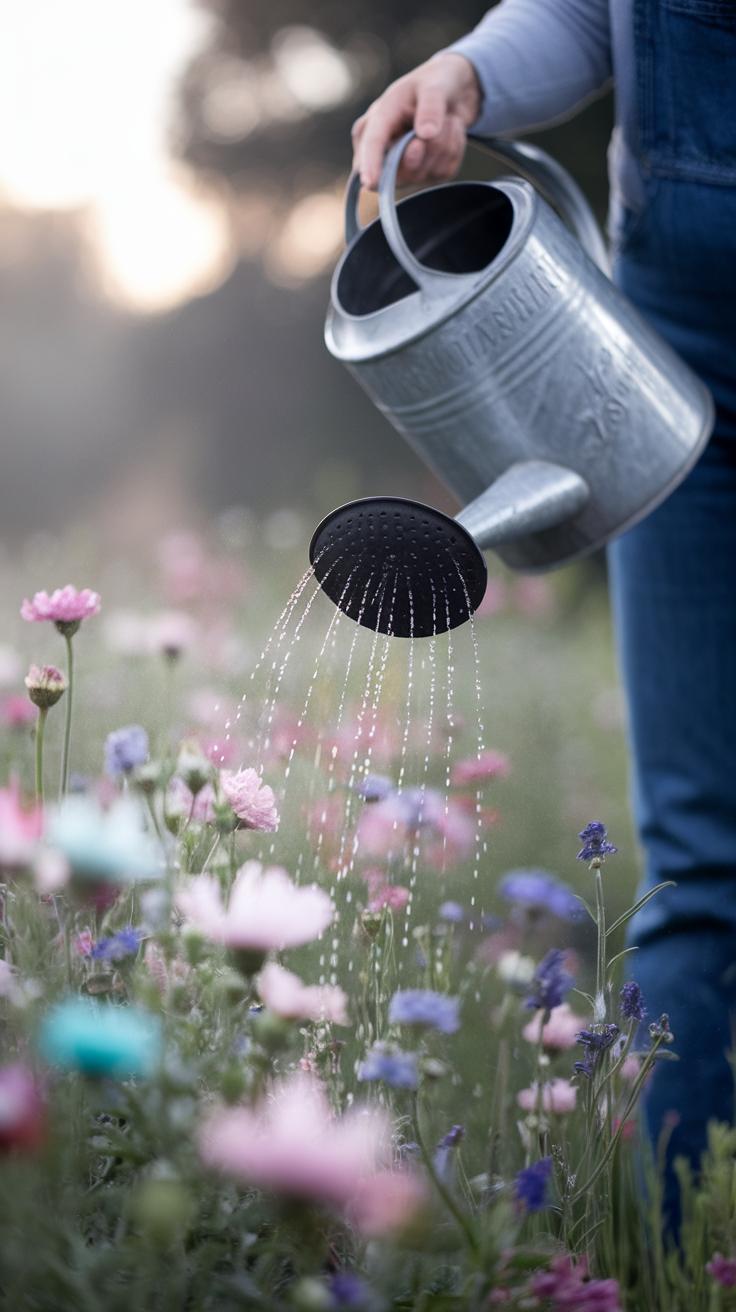
Keeping your wildflower garden healthy takes regular attention. Water newly planted areas deeply but avoid soaking older plants too often. Most wildflowers thrive with natural rainfall once established. Pay close attention to your plants’ condition throughout the season. Look for signs of pests or diseases early. Removing affected leaves helps prevent spread.
Weeding is a key task. Remove unwanted plants by hand before they set seed. Pull weeds from the roots to stop them from growing back. Adding mulch around your wildflowers can reduce weeds and help soil retain moisture. Use natural materials like straw or shredded leaves to avoid chemicals that harm pollinators. Mulching also improves soil health over time.
Regular checks let you catch issues before they become big problems. Ask yourself: Are some flowers struggling? Do you spot invasive plants sneaking in? Adjust care based on your garden’s needs to keep your wildflowers strong and pollinators attracted.
Weed Control Without Chemicals
Manual removal works well for controlling weeds in your wildflower garden. Hand-pulling removes weeds without putting pollinators at risk. Check your garden weekly and pull any seedlings before they mature. Using a hoe or garden fork can loosen soil and uproot young weeds easily.
Mulching helps block weed seeds from sprouting. Choose organic mulches that break down and enrich your soil over time. You might also use ground covers in bare spots to outcompete weeds naturally. Avoid herbicides, as even small amounts can harm bees and butterflies visiting your garden.
Could you spend a few minutes a week weeding by hand to protect pollinators? This simple step supports a healthy, chemical-free habitat.
Watering And Feeding Advice
Water your wildflowers during dry spells, focusing on the roots rather than leaves. Morning watering reduces evaporation and fungal risks. Established wildflowers usually need less water than garden plants. Overwatering can weaken their natural resilience.
Most native wildflowers adapt to local soils and rarely need fertilizer. Excess nutrients encourage weeds and reduce flower production. If your soil is very poor, a light application of compost in early spring can help. Avoid chemical fertilizers that may harm insects feeding on your plants.
When did you last observe your garden’s water needs? Adjust watering as conditions change to keep your wildflowers healthy without creating dependency. Let your soil and plants guide your actions.
Supporting Pollinators With Additional Features
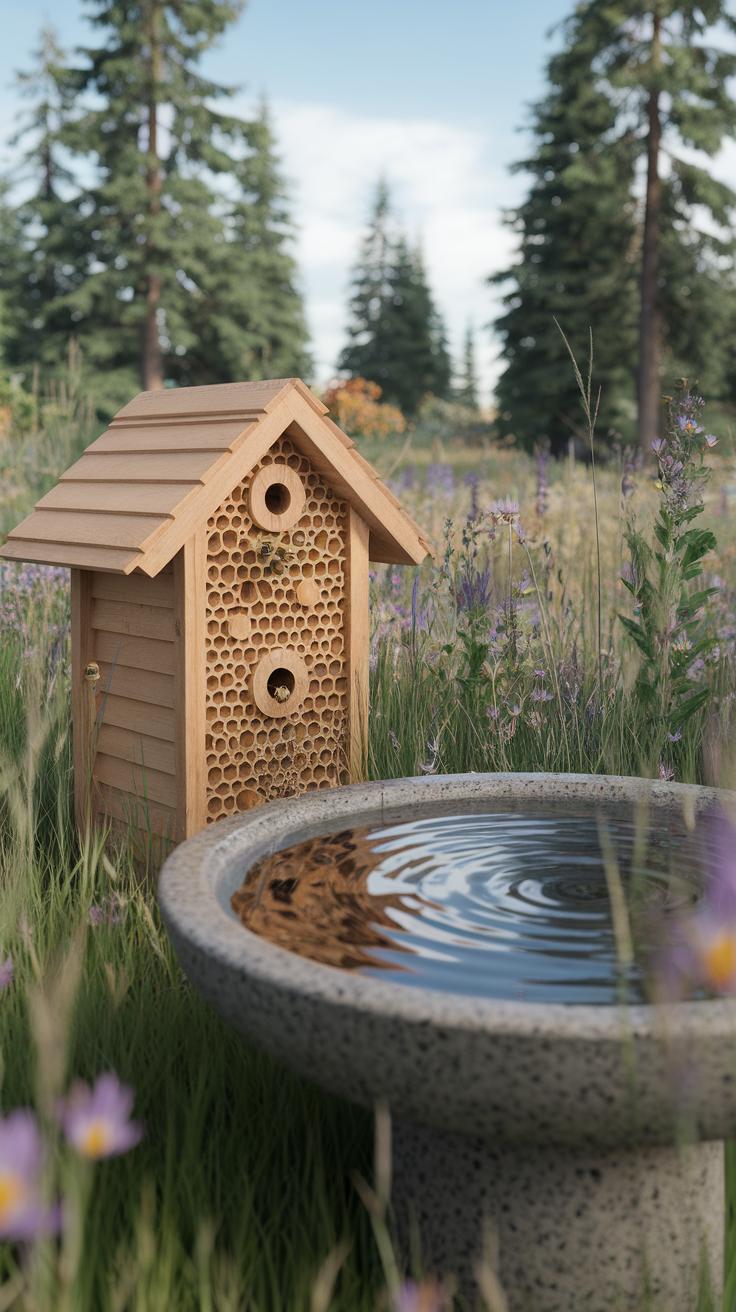
Your wildflower garden becomes a stronger habitat when you add elements that go beyond just plants. Pollinators need water, shelter, and safe places to nest. These features help them rest, stay hydrated, and raise young. Think about how a bee or butterfly uses your garden throughout the day. What else could help them survive? Simple additions often make a big difference.
Small water spots encourage pollinators to visit and stay longer. Shade or slight shelter protects them from weather or predators. Safe nesting spots support native bees that do not live in hives. Creating a well-rounded habitat means your garden serves as more than just a feeding area. What unique space can you build in your yard today to support these helpers?
Providing Water Sources
Pollinators need water to drink and cool down. Place shallow dishes with stones or marbles in your garden. This way, insects can safely land and sip water. Muddy or damp areas near the flowers also attract species like butterflies and bees. You might create a small puddle or scrape damp soil to keep conditions moist.
Make sure water stays fresh and clean. Change it every few days to prevent mosquitoes. Check if rain collects naturally in low spots. If it does, leave these puddles untouched for pollinators. Could you add a shallow birdbath or a wide saucer with fresh water near your wildflowers?
Creating Shelter And Nesting Areas
Native pollinators need safe places to hide and lay eggs. Bare soil patches attract ground-nesting bees. Leave some soil exposed where it won’t be disturbed by people or pets. Small piles of dead wood or brush provide shelter for insects during bad weather.
Bee hotels made from hollow reeds or bamboo tubes offer homes to solitary native bees. Build or buy one and place it facing southern sunlight, protected from heavy rain. These simple shelters help pollinators rest and reproduce.
Could you set aside part of your garden for shelter that mimics natural habitats? This small effort can boost local pollinator numbers and improve your wildflower garden’s health overall.
Troubleshooting Common Challenges
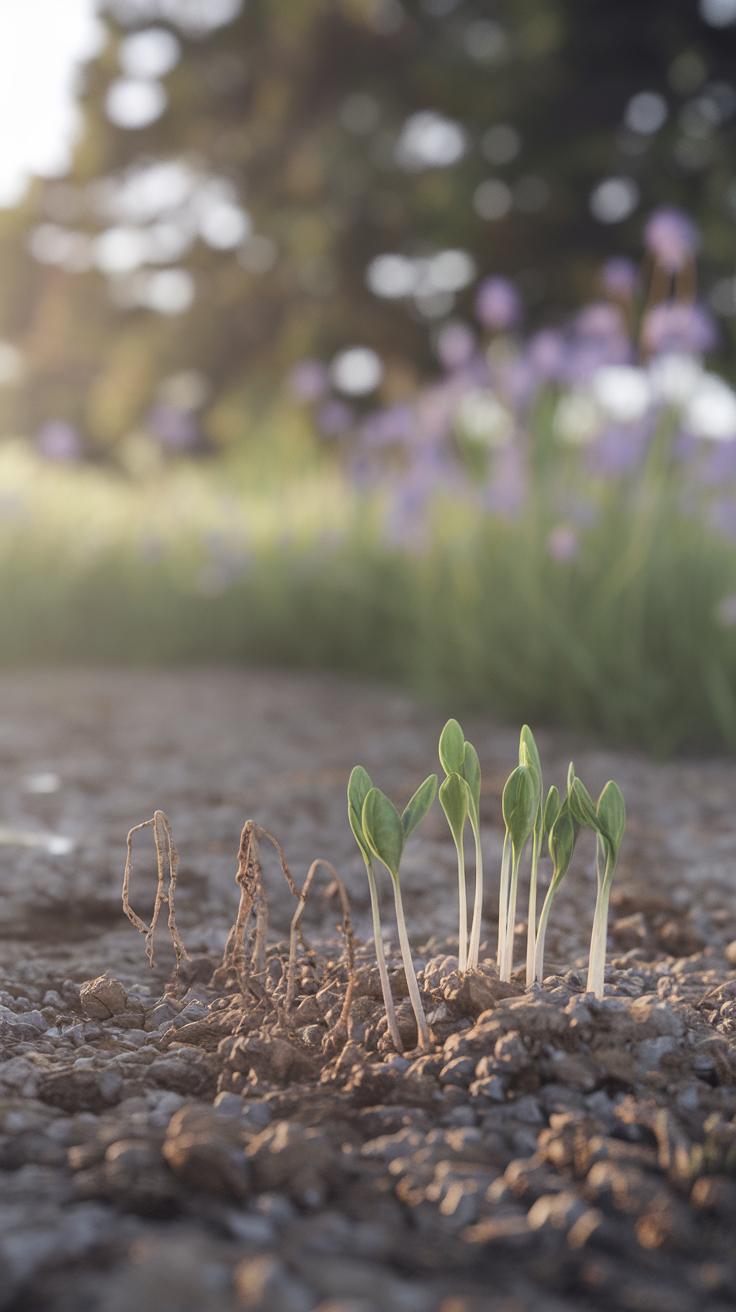
Encouraging Successful Growth
Poor seed germination frustrates many wildflower gardeners. If your seeds fail to sprout, consider adjusting the soil. Wildflowers grow best in well-drained soil with moderate fertility. Overly rich soil encourages weeds that compete with your flowers.
Check if you planted at the right time. Most wildflower seeds need cool, moist conditions to start growing. Plant seeds in early spring or fall when temperatures are mild. If seeds dry out, they may fail to sprout.
Reseeding is a practical fix. Scatter more seeds thinly across bare patches to improve coverage. Gently press seeds into the soil but avoid burying them too deep, as many wildflower seeds need light to germinate.
Consider starting seedlings indoors if outdoor conditions feel unpredictable. Transplant young plants when they are strong enough. Does your garden get too much direct sun or shade? Adjust your planting zone to match the needs of your wildflowers.
Managing Pest Issues Safely
Pests can damage wildflowers, but harsh chemicals harm pollinators and beneficial bugs your garden needs. Instead, try manual pest control. Remove insects by hand or use a strong spray of water to knock off pests like aphids.
Introduce natural pest predators such as ladybugs or lacewings. They feast on harmful insects without upsetting garden balance. You can also plant companion flowers like marigolds, which repel certain pests.
Use organic insecticidal soaps or neem oil carefully. These options target harmful bugs while leaving pollinators mostly safe. Apply treatments in the early morning or late evening when bees are less active.
Ask yourself, are there signs of pest damage on young buds or leaves? Early detection is key. Regularly inspect plants to catch problems before they spread and affect wildflower health and pollinator visits.
Enjoying And Expanding Your Wildflower Garden
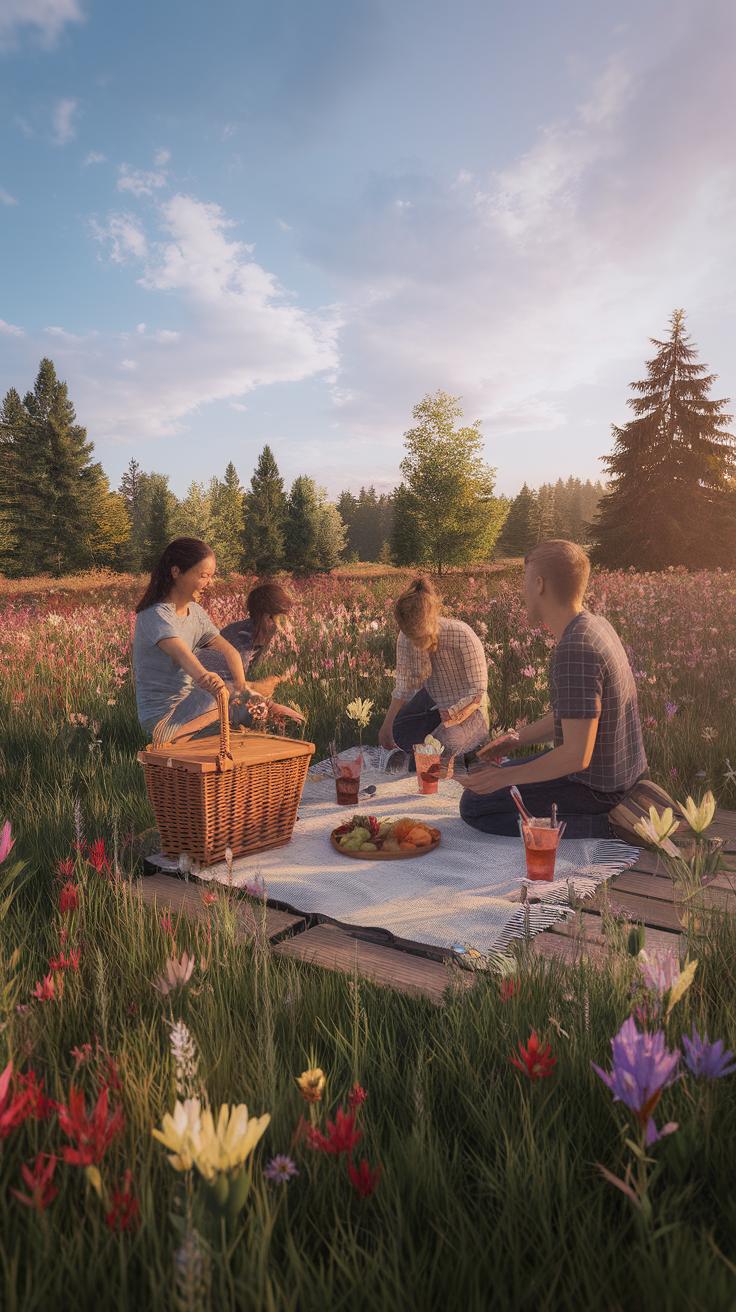
Observing Pollinators At Work
Spend time watching your wildflower garden throughout the day. Different pollinators appear at varying times. Bees often gather pollen in the morning when flowers are fresh. Butterflies tend to visit during warmer afternoon hours. Note which species visit and which flowers attract them most. Keep a simple journal or take photos to record changes through the seasons.
This tracking helps you see if your garden supports pollinators year-round or if some times are quieter. Are certain flowers visited more in spring than fall? Watch for changes in pollinator numbers after planting new wildflower types. What patterns do you notice? Regular observation guides future planting choices and shows your garden’s impact on local pollinator life.
Growing Your Garden Over Time
Collect seeds from healthy flowers before they drop to the ground. Store dry seeds in labeled envelopes. Sow them in prepared soil beds within your garden or in container trays if space is tight. Moving native wildflowers to new areas encourages pollinators to spread out and find food in more places.
Divide mature clumps of wildflowers in early spring or fall to create new patches. Expanding little by little helps build a connected habitat network. Think about nearby spots like lawns, unused corners, or community spaces for new plantings. How can you use seed sharing or swapping with neighbors to grow local pollinator-friendly zones?
Your garden does not have to stay fixed in one place. Gradually increasing wildflower areas contributes to pollinator health and diversity in your neighborhood and beyond.
Conclusions
Wildflower gardens play an important role in supporting pollinators by providing essential food, shelter, and breeding spaces. Choosing native plants and creating a diverse mix of flowers increases the attractiveness for various pollinator species. Your garden becomes a natural habitat that encourages pollination, which benefits both the plants and the pollinator communities. Sustainable gardening practices also reduce the need for chemicals, fostering a safer environment.
Maintaining a wildflower garden requires patience and observation. Monitoring flowering times, managing weeds, and providing water sources are all useful actions. By creating and caring for your wildflower area, you contribute to preserving pollinator populations and enhancing local ecology. Your efforts help keep ecosystems healthy and productive for future generations.


